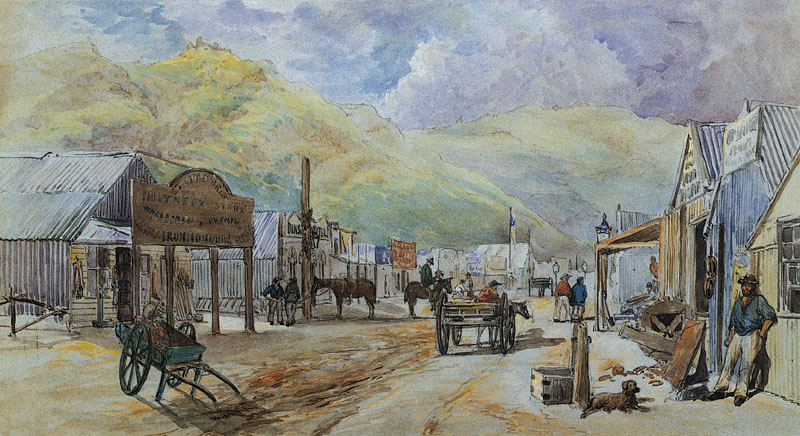POWELL, David, Junior;
A Diggings Township, Dunstan, Otago
c.1864
Watercolour on paper
250 x 450mm

Nothing is known of the artist who painted this view. The label attached verso suggests that he was a resident of London who visited Aotearoa as an artist or as a participant in the Otago goldrush of the 1860s. However, it is also possible that the label is that of a framer.
The Dunstan area of Central Otago was officially proclaimed a goldfield on 23 September 1862. It included what later became the towns of Clyde and Alexandra, both looking rather alike at first, with a single street down the middle of two lines of temporary looking dwellings. Comparison with contemporary photographs proves that the street depicted here is Sunderland Street, Clyde.
The dating of the painting can be fairly precise in that until 1864 Clyde was in fact known as Dunstan. It was a diggings township until 1864, after which its population declined sharply. The presence of men in the street clad in mining garments and the degree of activity suggest a thriving centre rather than a ghost town. The population of the whole Dunstan area was between 30,000 and 40,000 during the boom years of 1862–64. By 1868, the population had halved. This painting is a rare contemporary record. Some sketches of the town exist, but this is the only known watercolour.
Provenance
1986–
Fletcher Trust Collection, purchased from McArthur and Company, 12 August 1986, lot 412
–1986
Unknown
